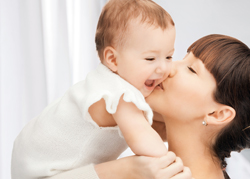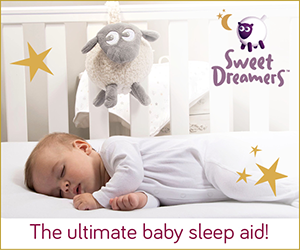Right on Cue

From the moment your child is born, her survival is dependent on your attachment to her. Nevertheless, the bond you make does more than just allow for survival. How your attachment forms in those early years will not only set the stage for all other relationships, but it will also stimulate brain growth and lay a foundation for all future learning.
The attachment process between a parent and child can begin as early as conception. It doesn’t take long for parents to begin to build their hopes and dreams for their unborn child. Attachment can also happen the first time a parent feels their baby move, or when the parent sees the baby on an ultrasound. For babies, it begins in the womb when the baby responds to things like the sound of their mother’s voice or the touch of their father’s hand on mom’s belly.
Once your baby is born, consistently responding to her need for comfort creates a sense of security in your baby and will not spoil her. By responding to your baby’s cries, you are teaching her that she can trust you and depend on you. From that foundation, she learns that she can safely move through her environment, knowing that you will be there if and when she needs you. Attaching in this way makes learning and growing a safe and happy experience. Also, you are setting the stage for other relationships your baby will develop
throughout her life. As your baby grows older, your continued presence isn’t about being overly protective or being a “helicopter parent,” but, rather, your presence is there to keep her calm as you teach her how to resolve problems.
The alternative wherein babies are left to “cry it out,” creates insecurity and does not promote healthy attachment. When babies are left to cry for long periods of time, they have an increase of cortisol and adrenaline (stress hormones) which affect the nerves in the brain. These high hormone levels in infancy can have long term implications for child development (you can find more on this at www.askdrsears.com).
Crying is not the only way that babies seek affection. It is important to understand your baby’s many cues since these will guide you in your attachment. Her cues are a system of behaviours that she displays in order to have her needs met. A coo may mean she wants to
interact; a piercing cry may mean she is not feeling well; turning her head towards the side can signal hunger; and rubbing her eyes might mean she is tired. As you get to know your baby, you will learn to recognize her signs of pleasure and distress so you can respond to them appropriately.
Temperament also plays a role in attachment. Temperament is part of your baby’s characteristics and it influences the way she responds to daily events in her life. It is her individual behavioural style and how she expresses her emotions. Just as we have our own personalities, so too does your baby. If your baby is energetic and curious, take her out into various social settings. If your baby gets fussy at certain times, stay close to home and keep a predictable routine. With a healthy attachment, parents can assist their children in how they respond in different situations throughout their life.
A wonderful byproduct of attachment is that it builds your baby’s brain! When you interact and play with your baby, she is building neural connections to help her develop now and make learning easier and faster later on. You can play simple games with your baby like peek-a-boo, or hold an object out for her to grab, or make a face until she imitates you. You can also do activities like infant massage or sing and read to her. All these interactions build your bond to each other while promoting growth and development.
There are many great free resources available for parents looking for more information on attachment and activities available to promote your connection to your little one. The website www.healthybabyhealthybrain.ca has videos that look at how your baby’s brain
develops through love, play and a healthy lifestyle. Parents in Ontario can also contact their local Ontario Early Years Centre (OEYC)
to see when and where playgroups are offered. Parents can register with them for free workshops that focus on attachment and
development. Workshop topics can include Infant Massage; Make the Connection- Promoting Secure Attachment; or Baby Signs
and Songs.
Article courtesy of Ontario Early Years Centres. Please visit www.ontarioearlyears.ca to find out what is available at your local OEYC.




